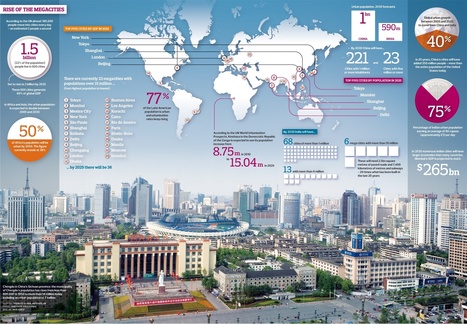The rapid increase in the number of cities home to more than 10 million people will bring huge challenges … and opportunities...
It's not just that more people now live in cities than in the rural countryside (for the first time in human history). It's not just that major cities are growing increasingly more important to the global economy. The rise of the megacities (cities over 10 million inhabitants) is a startling new phenomenon that really is something we've only seen in the last 50 years or so with the expectation that the number of megacities will double in the next 10 to 20 years (currently there are 23). This reorganization of population entails wholesale restructuring of the economic, environmental, cultural and political networks. The urban challenges that we face today are only going to become increasingly important in the future.
Via Matthew Wahl



 Your new post is loading...
Your new post is loading...











More and more people are moving to the cities than ever before. As a result I believe there are more megacities on the way. However I think there is a limit to these cities. How are they going to be powered? How are the people going to be fed? Where will they work? how will these cities impact the environment? Where is all the fresh water going to come from?
It is a good thing that there is more megacities being created because you can see more people move in which will help the city function better economics wise. When it comes down to the population that is a different story because there is more people to worry and deal with. The increase of people could go both ways because it can be good but at the same time it can go bad because people will start arguing in which it can get physical which means city ratings going down.
Great info graphic on mega cities.